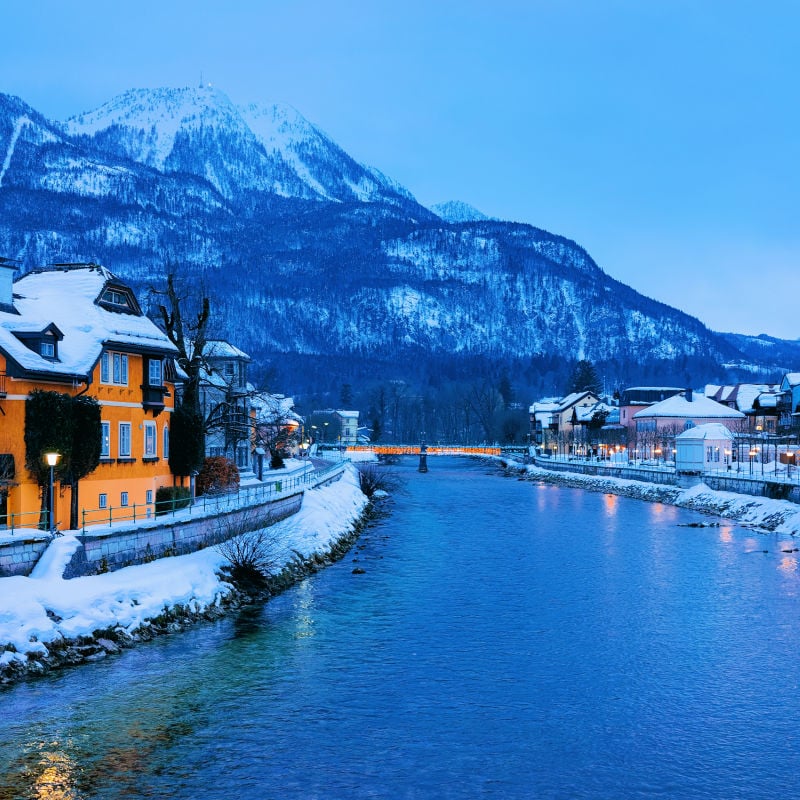Share the article
Last updated
Europe is the destination for everyone for a journey into the past. A continent full of historic medieval fortresses, ancient cobblestone towns and home to some of the most beautiful man-made structures of the ancient world. it simple radiates culture.
With so many incredible places to choose from, we know it’s remarkably challenging to put together a Europe itinerary, especially if it’s your first time and you’re not quite sure where to go this winter other than Paris , Milan and London. .
Fortunately, the European Commission has you covered, as it announced the top 3 destinations in Europe for cultural immersionand the winning trio might surprise you:

The European Capitals of Culture for 2024
Every year, the EC awards the status of ‘European Capital of Culture’ to a selection of European cities that stand out for their historical significance.
Over the course of a year, the winning trio or duo will organize a series of events aimed at promoting their local culture and tourism offer, and receive funding to boost urban development and increase its international visibility.
This year the current Capitals of Culture are Eleusis in Greece, Timișoara in Romania and Veszprém in Hungary.

Normally the title is awarded smaller cities or regional units relatively unknown to the general public outside their own country, in an effort to promote growth and shine a light on some of Europe’s overlooked cultural treasures.
This winter, three new hidden gems will replace the 2023 triad as European Capitals of Culture (ECC), and they just might be the most exciting and diverse group over the years the Commission has chosen:
Bad Ischl, Austria
A spa destination in the heart of the Austrian Alps
Bad Ischl, a small spa town in Upper Austria, has been something of a pilgrimage site for health and wellness enthusiasts for centuries.

A typical Austrian settlement surrounded by majestic mountains and intersected by the Traun River, whose fast-flowing current is the only sound that breaks the silence in the Alps. idyllic escape from the much larger Vienna or Graz.
Austrians have long regarded Bad Ischl as a place where they can reconnect with nature, heal their inner ailments and take a much-needed breather, but outside the borders of the Republic and the wider German-speaking world it has remained relatively unheard.

With his luxury spas equipped with modern wellness centerswhere holistic treatments are available and natural thermal springs nestled in the heart of the Salzkammergut mountains, it is truly a wonder that Bad Ischl has flown under the radar for so long.
Other attractions include the Old Town, where the narrow cobbled streets are lined by traditional pastry shops and the long gondola lift, which rises above the town and crosses the alpine meadows to reach the Katrin peak, at 1400 meters altitude.
At the top of this peak you have a beautiful panoramic view of the Salzkammergut Alps and the impressive ruins of Wildenstein Castle.
Tartu, Estonia
The intellectual capital of one of the easternmost states in Europe
The country of Estonia as a whole deserves a nod, with the capital Tallinn boasting one of the best preserved medieval towns in all of Europe and the eastern town of Narva offering picturesque views across the Narva River to Russia, but it is Tartu which has been given ECC status this time.

It may be a small city with only around 97,000 inhabitants – the second largest in Estonia – but it is often considered the intellectual center of the country, home to the oldest university and a host of historical sites.
Notable buildings include the University of Tartu, founded in the mid-17th century, the Supreme Court of Estonia, the National Museum, the 18th century Town Hall and the ruins of a medieval cathedralwhich fell into disuse as early as 1563.
Estonia is known worldwide for its medieval folk festivals, with a large medieval fair in Tallinn every year around winter, but a little known fact among tourists is that Tartu is the birthplace of Estonian song festivals.

It is one of the largest choral events in the world and is officially classified by UNESCO as a masterpiece of the oral and intangible heritage of humanity, while more than 30,000 singers perform for an audience of more than 80,000 people. The next event will take place in the summer of 2024.
Bodø, Norway
A cultural center north of the polar line
The northernmost entry on this list is the Norwegian coastal city of Bodø located north of the Arctic Circleand it is a very compact city, with the airport, port, train station and historic center within walking distance of each other.
This makes Bodø the most walkable and certainly the most unique European Capital of Culture for the coming winter. If harsh, freezing winters don’t scare you easily, you might want to give this one a try, as the city is a popular hotspot for Aurora Borealis sightings.

It also serves as a gateway to Norway’s wild Arctic, where the country’s signature green spaces and dramatic fjords give way to tundra and jagged snow-capped peaks.
The choice of Bodø as ECC may have been controversial for some, as it is quite remote and best known among Norwegians for its untouched nature and winter scenes, but the municipality is keen to reinvent itself as not just an Arctic refuge, but also as a holiday destination. regional cultural center.
Starting this winter, authorities will promote events focusing on the Sami lifestylein relation to the indigenous groups of Sámi people living throughout Northern Europe, and encouraging investment in historic structures in the centre, including the Stormen Culture Centre, an icon of Bodø’s waterfront.

Read more:
Top 5 Travel Insurance Plans for 2023 from $10 per week
How to easily earn points for free travel

SUBSCRIBE TO OUR LATEST POSTS
Enter your email address to subscribe to the latest Travel Off Path breaking travel news, delivered straight to your inbox.
This article originally appeared on TravelOffPath.com





